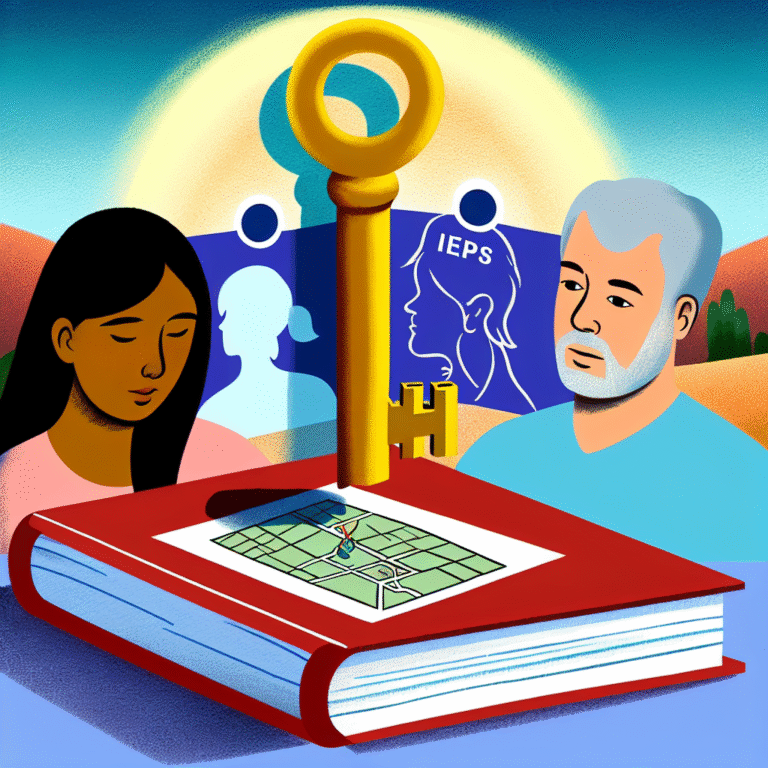
Introduction
Imagine a world where every child, regardless of their abilities, receives the exceptional education they deserve. A world where families, educators, and advocates unite, ensuring that each child’s unique needs are recognized and met. This isn’t just a dream; it’s the reality that can be achieved through The Power of Community: Grassroots Advocacy in Special Education. As parents, teachers, and community members band together, they become an unstoppable force for change. This article explores the transformative power of community-driven advocacy in the realm of special education, offering insights into successful initiatives, case studies, and actionable steps for those looking to make a difference.
Understanding Grassroots Advocacy
What is Grassroots Advocacy?
At its core, grassroots advocacy involves mobilizing everyday people to influence local, state, or national policies. In the context of special education, it means that parents, community members, and educators work together, often at the local level, to advocate for better services, funding, and support systems for children with disabilities.
Why is it Important?
Why does this matter? Consider that approximately 1 in 5 children in the U.S. experiences some form of developmental disability. Grassroots advocacy empowers communities to not only raise awareness but also actively fight for the rights and needs of these children. It channels local experiences into broader social change, making the voices of families heard by policymakers and institutions.
The Critical Role of Community in Special Education
Building Awareness
One of the most immediate impacts of grassroots advocacy is its ability to raise awareness. Through community workshops, social media campaigns, and local forums, important topics such as early intervention and individualized education plans (IEPs) become part of national conversations.
Case Study: The “Inclusion Revolution”
In a small town in Kansas, a group of parents formed the Inclusion Revolution coalition to advocate for the inclusion of children with disabilities in mainstream classrooms. They began by organizing informational sessions at local schools, addressing common misconceptions and emphasizing the benefits of inclusive education. As awareness grew, local schools began revising their policies—resulting in a significant increase in classroom inclusivity.
Analysis: This case study illustrates how grassroots advocacy can effectively raise awareness and prompt policy changes. By educating the community, the coalition not only fostered understanding but also laid the groundwork for subsequent action.
Mobilizing Resources
Successful grassroots advocacy often requires resources—financial, educational, and emotional. Community members are often well-positioned to identify and mobilize local resources to support special education initiatives.
Chart: Funding Sources for Grassroots Initiatives
| Funding Source | Description |
|---|---|
| Local Businesses | Donations or sponsorship of community events |
| School District Grants | Financial support for specific programs |
| Crowdfunding Platforms | Online campaigns for specific needs |
| Community Fundraisers | Local events to raise funds for special projects |
| Government Grants | Federal or state funding for educational initiatives |
Encouraging Family Engagement
Engaged families are often the backbone of successful advocacy efforts. When families come together, share their stories, and strategize, their collective voice gains strength.
Case Study: Parents United for Special Education (P.U.S.E.)
P.U.S.E., established in Michigan, focuses on enhancing parental engagement in special education. The organization created a series of workshops designed to educate parents about their rights, the IEP process, and ways to effectively communicate with educators. As families became more empowered and knowledgeable, they formed a powerful advocacy group, resulting in improved special education policies district-wide.
Analysis: P.U.S.E. showcases the synergy between education and advocacy. Empowered families are not only better equipped to support their children but also become advocates for systemic change.
Impacting Policy Change
Local vs. National Impact
While grassroots advocacy usually starts locally, its impact can ripple out to influence national policies. When localized efforts gain traction, they can be showcased as models for broader initiatives.
Case Study: The Disability Rights Movement
Beginning in the 1960s, activists at the grassroots level campaigned for the rights of individuals with disabilities. Their efforts culminated in significant legislation such as the Americans with Disabilities Act (ADA). The grassroots advocacy led by local communities laid a foundation that prompted national attention and legislation.
Analysis: The disability rights movement serves as a poignant example of how grassroots advocacy can lead to monumental changes at the federal level, proving that local efforts can have far-reaching implications.
Legislative Advocacy
Grassroots groups can also considerably influence legislative policies. By organizing letter-writing campaigns, meeting with local representatives, and publicizing issues through media, they can push for legislative changes that support special education.
Table: Key Legislative Milestones in Special Education
| Year | Legislation | Description |
|---|---|---|
| 1975 | Education for All Handicapped Children Act | Guaranteed free appropriate public education for children with disabilities. |
| 1990 | Individuals with Disabilities Education Act (IDEA) | Expanded rights and protections for children with disabilities. |
| 2004 | IDEA Improvement Act | Made improvements in accountability and educational standards. |
| 2015 | Every Student Succeeds Act (ESSA) | Focused on equitable education for all students, including those with disabilities. |
Strategies for Effective Grassroots Advocacy
Building Coalitions
One of the most powerful strategies for effective grassroots advocacy in special education is the formation of coalitions. When diverse stakeholders—including parents, educators, and local organizations—come together, they create a more powerful voice.
Use of Social Media
In today’s digital age, grassroots advocates can leverage social media platforms to spread information quickly. By sharing testimonials, organizing events, and launching campaigns, advocates can tap into vast networks and amplify their messages.
Grassroots Storytelling
Storytelling is a crucial element of grassroots advocacy. Personal stories resonate with audiences and humanize the issues at stake. Whether through social media, community meetings, or local publications, sharing stories of families navigating special education fosters empathy and understanding.
Overcoming Challenges in Grassroots Advocacy
Resistance to Change
Change is often met with resistance. Advocacy groups must be prepared to face skepticism from those who may not fully understand the benefits of inclusivity in education. Strategies like fostering open dialogues and emphasizing success stories can help overcome such resistance.
Funding Limitations
Many grassroots efforts struggle with financial support. Building partnerships with local businesses and utilizing crowdfunding can help alleviate these issues.
Conclusion
The Power of Community: Grassroots Advocacy in Special Education is not merely a concept—it’s a movement that can revolutionize education for children with disabilities. By mobilizing, educating, and strategizing together, communities can create an environment where every child has access to the support they need to thrive. The potential for change begins with you—engage with your community, share your story, and help advocate for a better future in special education.
FAQs
1. What is grassroots advocacy in special education?
Grassroots advocacy in special education involves local communities coming together to support and advocate for the educational needs of children with disabilities through awareness campaigns, mobilizing resources, and influencing policy changes.
2. How can I get involved in grassroots advocacy?
You can get involved by joining local organizations, attending community meetings, participating in workshops, and spreading awareness through social media and community events.
3. What are some successful strategies for advocacy in special education?
Successful strategies include forming coalitions, utilizing social media, engaging in storytelling, and building relationships with local officials to influence policy.
4. How can I educate others about special education needs?
You can educate others by organizing informational workshops, distributing resources, sharing personal stories, and utilizing social media to reach a broader audience.
5. What role do local businesses play in grassroots advocacy?
Local businesses can contribute by donating resources, sponsoring events, or providing funding to support special education initiatives within the community.
Through thoughtful and sustained engagement, each person can contribute to The Power of Community: Grassroots Advocacy in Special Education, making a significant impact in the lives of children and families alike. Let’s take action together!














